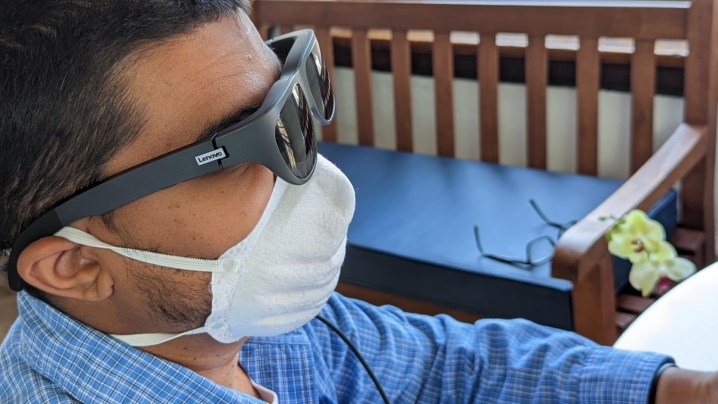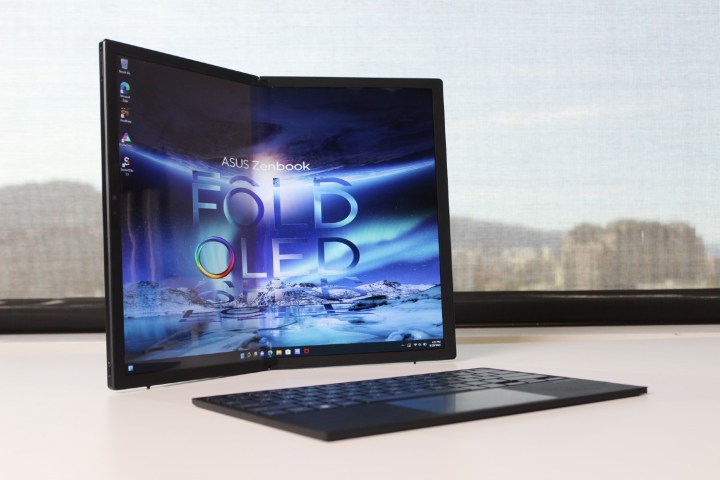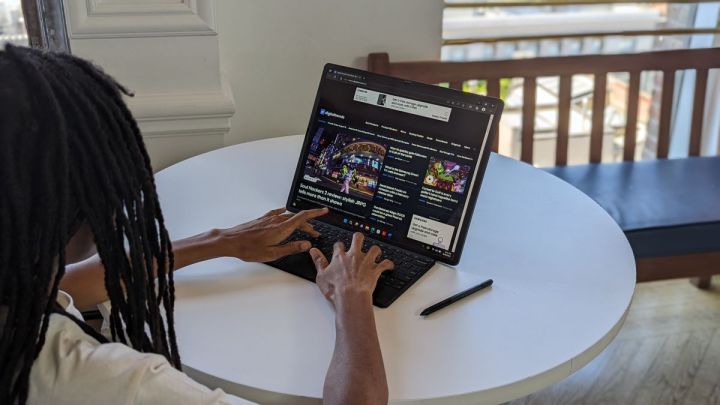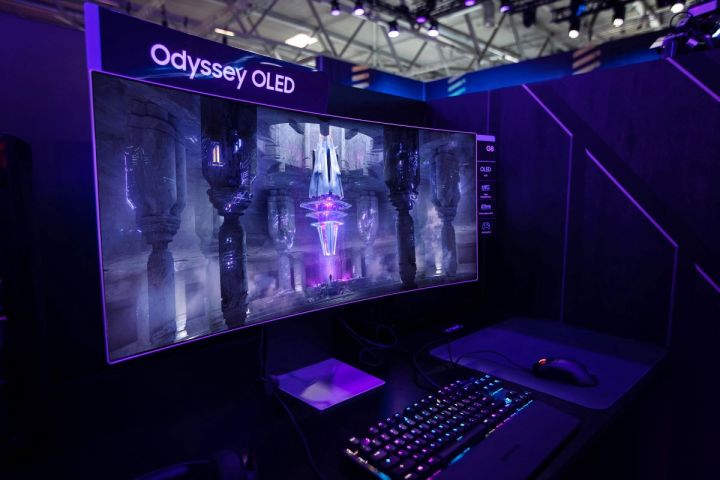IFA 2022 hasn’t exactly been a barnburner. The annual tech conference, which takes place in Berlin, is usually host to a bevy of tech announcements and acts as a mid-year launching pad for products coming out for the holiday season later in the year.
This year, while smaller, was still a platform for lots of exciting new innovations that showcase the future of tech in some of the biggest product categories.
Lenovo Glasses T1

The growth of AR glasses has been slow, but Lenovo’s latest attempt seems like its most accessible yet. The Lenovo Glasses T1 are a set of wired AR glasses that can connect to a smartphone or PC using a USB-C cable that displays virtual screens right on the lenses of the glasses.
The point? To give you private, secondary screens that can save space — and let’s be honest, it just feels futuristic. To keep things sharp, the Lenovo Glasses T1 uses micro-OLED screens with a 58 pixels per degree with a contrast of 1,000:1. Lenovo is targeting the price to land under $500, which gives it a decent shot at actually finding its way to some adventurous early adopters.
Asus Zenbook Fold 17

Foldable PCs are another technological advancement that has had a painfully slow rollout, but the Asus Zenbook Fold 17 dares to continue the trend from where the original ThinkPad X1 Fold started off. The Zenbook Fold expands the canvas to a much larger 17.3-inch screen, which has two important goals: provide a more usable size screen regardless of which mode you’re using and allow for enough for a larger, more comfortable keyboard.
Both goals are accomplished, and the result is a foldable PC that feels like it actually lives up to the promise of its unique form factor. You can use the device in “desktop mode,” which gives you access to that large 17-inch 4:3 screen on the go. It’s a fantastic screen to get work done on. It’s far from the final evolution of this design (which you’ll read about it further down on this list), and it’s far too expensive, but it makes a solid case for why this tech is more than just a gimmick.
Oppo Reno 8 Pro

The Oppo Reno 8 Pro is not a phone you can buy in the US, but that doesn’t make it any less desirable. The slick design is the first thing to notice about, which includes a curvy camera module on the back, simple flat edges around the sides, and some impossible thin bezels on the front, around its 6.7-inch AMOLED screen.
But as a comparison to something like the OnePlus 10T, it’s an even more attractive offering. It has few weaknesses, despite coming in a modest price, which is why our own review called it a “no-nonsense” phone. It’s exactly the kind of Android phone we need more of here stateside.
LG OLED Flex

Curved gaming monitors are nothing new, but a display that can go from curved to flat? Now, that’s innovative. It’s a technology we saw first announced just weeks ago by Corsair with its Xeneon Flex, another bendable OLED monitor. But LG has its own model too, which blurs the lines between gaming monitor and television with its 42-inch screen size and its 4K 120Hz specs.
Of course, being OLED, the LG OLED Flex benefits from all the standard advances the panel technology provides. That includes absolute black, incredible contrast ratio, and brilliant colors. Considering how rare OLED gaming monitors still are, it’s encouraging to see experiments like the LG OLED Flex get put out in the world. But really, this is all about being to grab the sides of the panel and augment the screen right before your eyes.
Lenovo ThinkPad X1 Fold Gen 2

The second foldable screen laptop on this list, the ThinkPad X1 Fold Gen 2, takes the design in some daring new directions. Like the Zenbook Fold 17, the ThinkPad X1 Fold Gen 2 increases the screen size up from the original. It now has a 16.3-inch OLED screen with a sharper resolution of 2024 x 2560. Again, that’s more screen real estate and makes room for a keyboard with a better layout.
That new size also allows the device to be used in a new delightfully strange portrait mode, on top of the standard desktop and clamshell modes. Lenovo has also changed things up with its look, ditching the faux-leather hinge cover for a woven fabric exterior. It’s slick, giving the first foldable laptop a sequel that feels like a proper second generation.
Samsung Odyssey OLED G8

Bringing an OLED panel to one of Samsung’s most popular gaming monitors is a big deal. Although Samsung’s merely calling it “OLED,” this is actually the same QD-OLED panel that appeared in the Alienware QD-OLED 34 earlier this year. By combining the goodness of OLED with a Quantum Dot filter, Samsung is able to bring together the best of both worlds.
If the Odyssey OLED is anywhere near as good as Alienware’s QD-OLED 34, we may have another legitimate contestant for best gaming monitor and a brilliant showcase of how good HDR gaming can be with the right monitor.



